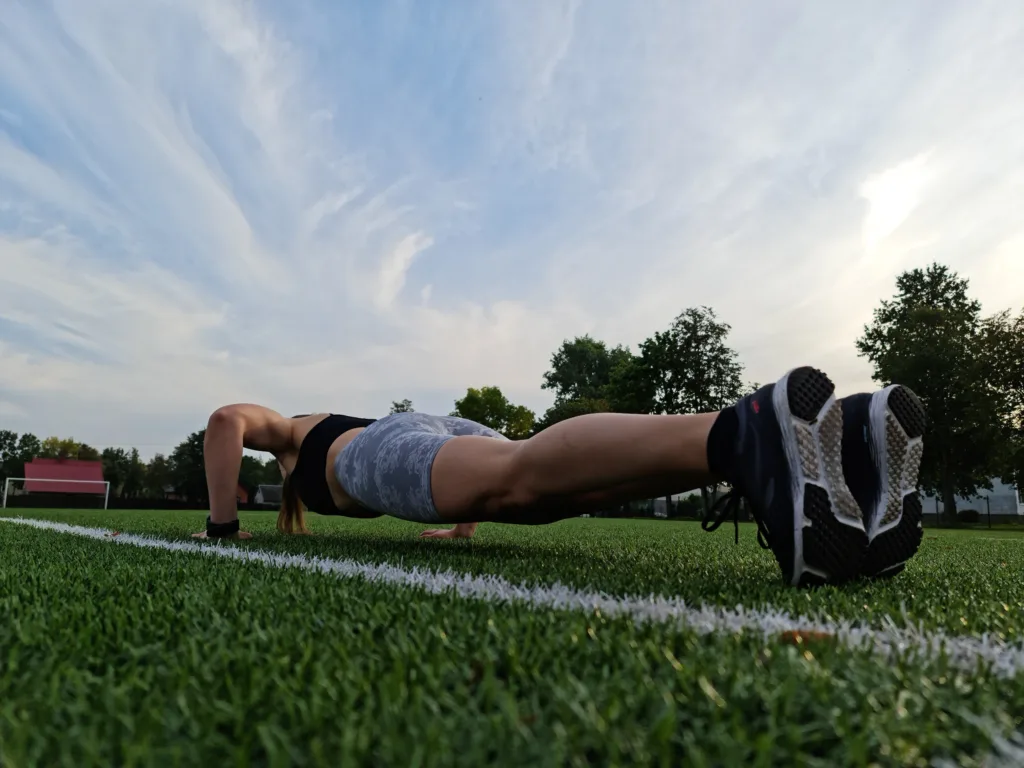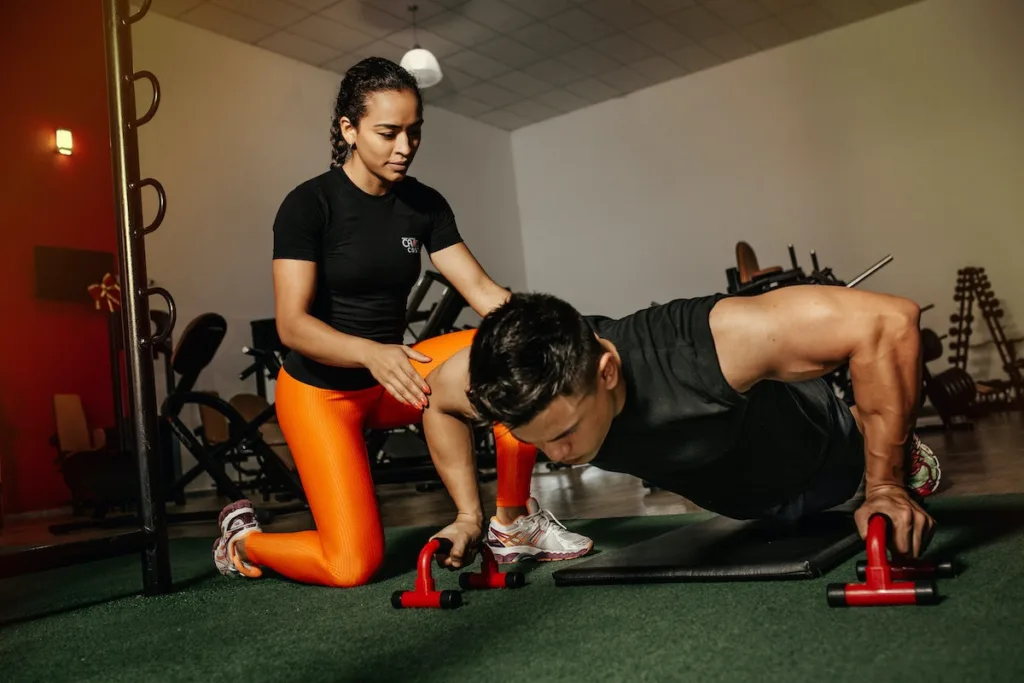Press ups are a form of bodyweight exercise in which you raise and lower your body using your arms while keeping your body straight. They primarily work your chest, triceps, and shoulder muscles, but also engage core and leg muscles to maintain stability.
What muscles are most worked in press ups
Press ups primarily work the chest (pectoral) muscles, triceps, and shoulders (deltoids). Secondary muscles that are also engaged include the core (abs and back), biceps, and legs (to maintain balance and stability).
Are there different types of press ups?
Yes, there are several variations of press ups that target different muscle groups and challenge your strength in different ways. Some common variations include:
- Classic press up: This is the traditional form of press up and works the chest, triceps, and shoulders.
- Diamond press up: This variation involves placing your hands close together, forming a diamond shape, which places more emphasis on the triceps.
- Wide press up: This variation involves placing your hands wider apart, which puts more emphasis on the chest and shoulders.
- Decline press up: This variation involves performing press ups with your feet elevated, which places more emphasis on the upper chest.
- Incline press up: This variation involves performing press ups with your hands elevated, which places more emphasis on the shoulders.
- Knuckle press up: This variation involves performing press ups on your knuckles, which strengthens the wrist and places greater emphasis on the triceps.
These are just a few examples of the many variations of press ups that you can do. The key is to experiment and find the variations that work best for you and your fitness goals.

Is it ok for girls to do press ups
Yes, it is perfectly fine for girls to do press ups. press ups, like any other form of exercise, can be beneficial for people of all genders. press ups can help build upper body strength, improve posture, and increase muscle endurance. Additionally, press ups are a great form of cardiovascular exercise, which can help improve overall health and fitness.
It is important to note that press ups, like any other exercise, should be performed with proper form to prevent injury. If you are new to press ups or have any physical limitations, it may be best to start with a modified version or seek the guidance of a fitness professional.
What is the correct way to do a press up?
Here’s how to perform a classic press up with proper form:
- Start in a plank position with your hands placed slightly wider than shoulder-width apart on the ground. Your body should be in a straight line from your head to your heels.
- Lower your body down towards the ground by bending your elbows, keeping your body straight and your core engaged. Your chest should come close to the ground, but not touch it.
- Push back up to the starting position by straightening your arms, keeping your body in a straight line.
- Repeat the movement for the desired number of reps.

Tips for proper form:
- Keep your neck and spine in a neutral position throughout the exercise.
- Don’t let your hips sag towards the ground or rise towards the ceiling.
- Keep your elbows close to your body, not flaring out to the sides.
- Keep your breathing controlled and steady throughout the movement.
If you are new to press ups, you may need to start with modified versions, such as incline press ups or knee press ups, until you build up enough strength to perform classic press ups with proper form.
How many press ups should I do?
The number of press ups you should do depends on several factors, such as your current fitness level, strength, and goals.
As a general guideline, if you are a beginner, you can start with 2 to 3 sets of 5 to 10 reps and gradually increase the number of reps and sets as you get stronger. If you are more advanced, you can aim for 3 to 4 sets of 12 to 20 reps.
It is also important to listen to your body and not push yourself too hard. If you are unable to complete a set, it is okay to take a break and resume when you are ready. Over time, you can aim to increase the number of reps you can perform in each set.
Remember, the key to a safe and effective workout is to work within your limits and progress at a safe and sustainable pace.
Are press ups good for rugby players?
Yes, press ups can be beneficial for rugby players as they help build upper body strength, which is important for many of the physical demands of the sport, such as tackling, rucking, and scrummaging.
In addition, press ups can also help improve overall core stability, which is important for maintaining balance and stability on the field.
However, it’s important to note that press ups are just one part of a comprehensive training program for rugby players. Rugby players should also incorporate other strength training exercises for the legs, back, and core, as well as cardiovascular training, agility drills, and sport-specific skill work. It is best to work with a coach or trainer to create a well-rounded training program that meets the specific needs of the sport.

